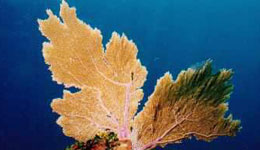With a marvellous and provocative environment you will find the Zapata Peninsula, one of the country’s most important ecosystems and the most extensive wetland in the Caribbean. Located in the southern part of the province of Matanzas, it’s the best conserved green area on the island, National Park with 70 000 hectares of extensive, virgin and privileged landscape that allows a close contact with nature full of attractions and options.
Zapata Peninsula is characterized by having a rich habitat with exceptional flora and fauna, with incalculable ecological value. In its ecosystem what dominate are the swamp glass, mangrove and marabou in addition to approximately 900 species of flora. There are 31 existing reptiles, 12 mammals and 171 bird species: like the tocororo, royal herons, parrots and even the small humming bird, the smaller bird on earth. In its canals there well conserved examples of manatí, the endemic manjuarí which is a fossil fish of the Mesozoic era covered by bone scales.
There are flat snout crocodiles living in the lagoons, the Rhombífer, only in Cuba, and the pointed snout crocodile Acutus that also live in the swampy coasts of the Gulf of Mexico and Caribbean, both of impressive size. There is a farm of the two species in the Boca which is the fluvial access of the Tesoro Lagoon, place full of legends that dates to the time of the indigenous people that lived in the surrounding areas. Also in the area you may walk on trail, to observe exotic forest and flowers, do bird watching particularly at Las Salinas reservoir among many other attractions.
It is an special area for diving not only for their beautiful sea bottom, submarine caves as well as diversity of fish but also because the diving could be practiced all year around due to its geographical position which is well protected from the effects of the Cold North Front during the winter time.
While you are there, you must visit the Guamá Tourism Center which is an area imitating a typical Taíno village with small huts connected to bridges. The Park is ideal for walking hills, bird watching, tracking, and hiking, boat rides among other water or land sports.
By road you will clash with the famous Bay of Pigs, full of history and where you can also find Playa Larga and Playa Giron. There a several monuments in the surrounding areas that recall the US backed mercenary invasion in April of 1961 and the Museum of Giron where you can take a look at the history and details of this historic event.
Playa Larga is a beautiful beach perfect for bird watching. From there you can go to Cayo Largo del Sur by boat. You can find Playa Giron some 30 kilometers away where there are abundant cenotes which are caves with interesting underground rock formation and is a marvellous world to explore for diving lovers. Not far you can find Caleta Buena where you can find corals, sponges and gorgonians.
The region has a scientific center for the preservation of ecosystems which in addition to its scientific work is an interpretative center that orientates, informs and guides the public on the peculiarities of the area. This center receives the cooperation of prestigious international organizations like UNESCO, which has joint projects with Cuba.
Things to do
Attractions
- ✓ Visit to the museum of the command of the FAR.
- Located in the Central Australia 3 km from the National Highway
- Topic: Here lies the Staff of the army and militias of Cuba during the Bay of Pigs invasion
- ✓ Visit to Australia sugar mill.
- Located in the Central Australia 3 km from the National Highway
- Tema: Los antiguos barracones de esclavos, los talleres ferroviarios de la fábrica de azúcar y hasta contratar un paseo en un coche turístico tirado por una locomotora del año 1913, con un recorrido de 4 Km.
Attractions
- ✓ Visit to Boca de Guama.
- Located 18 km from the National Highway
- Topic: Crocodile Farm, created in 1962 with the aim of protecting the species, you can take pictures of specimens of different sizes and there are several restaurants, 2 of them specialized in crocodile meat.
- ✓ Visit to Guama: it is a resort located in the middle of the Laguna del Tesoro, 49 cabins, disco and restaurant with modern amenities are built on stilts in the lagoon and linked by bridges, right next to a replica of a village taína. exceptional for contemplative tourism, the golden trout fishing (catch release), rides rowboats or motor.
Attractions
- ✓ Playa Larga: it located 12 km south of La Boca, one of the best beaches on the coast of the Caribbean Sea on the island and where also a magnificent coral reef with no beautiful seabed suitable for diving. war scenario of the Bay of Pigs Invasion in April 1961 on the road to La Boca there are more than 80 memorials of fighters killed in the fighting.
- ✓ Playa Giron: located at the east entrance of the Bay of Pigs and 34 km SE of Long Beach, Good beach and good seabed suitable for diving, warlike scene of the landing of Brigade 2005 in April 1961, here is the Bay of Pigs Museum - dedicated to the Bay of Pigs invasion where you can see an airplane, a tank, weapons, pictures and documents from the fighting.
Restaurants
- ✓ Café-restaurant at the junction of the access road and National Highway
- ✓ Restaurant El Carmelo, a 9 Km south of the highway
- ✓ Various restaurants in La Boca, 2 of them specialized in crocodile meat
- ✓ Restaurant in Caleta Buena, especializada en comida criolla y de productos del mar
- ✓ Restaurant in Los Cenotes
Hotels
- ✓ Guama
- ✓ Hotel Playa Larga
- ✓ Hotel Playa Giron




